Exchange Surfaces
Exchange Surfaces Revision
Exchange Surfaces
Large organisms rely on specialised exchange surfaces to supply all of their cells with the required substances and remove waste products.
They typically have large surface areas, a short diffusion path and methods to maintain a concentration gradient.
There are some key examples that you need to learn and be able to explain.
Small Intestine
The small intestine is adapted for efficient absorption of food into the blood stream.
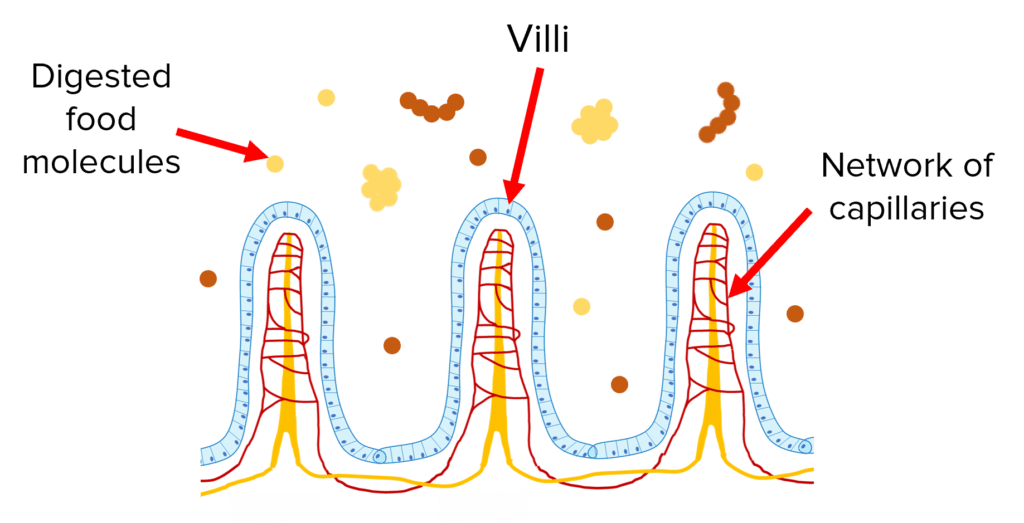
- It is lined with lots of of finger-like projections called villi which increase the surface area of the small intestine walls and therefore provide quick absorption.
- Each villus has a single layer of surface cells and a vast network of capillaries which means molecules from the small intestine have a short diffusion distance into the blood and the concentration gradient is constantly maintained.
Lungs
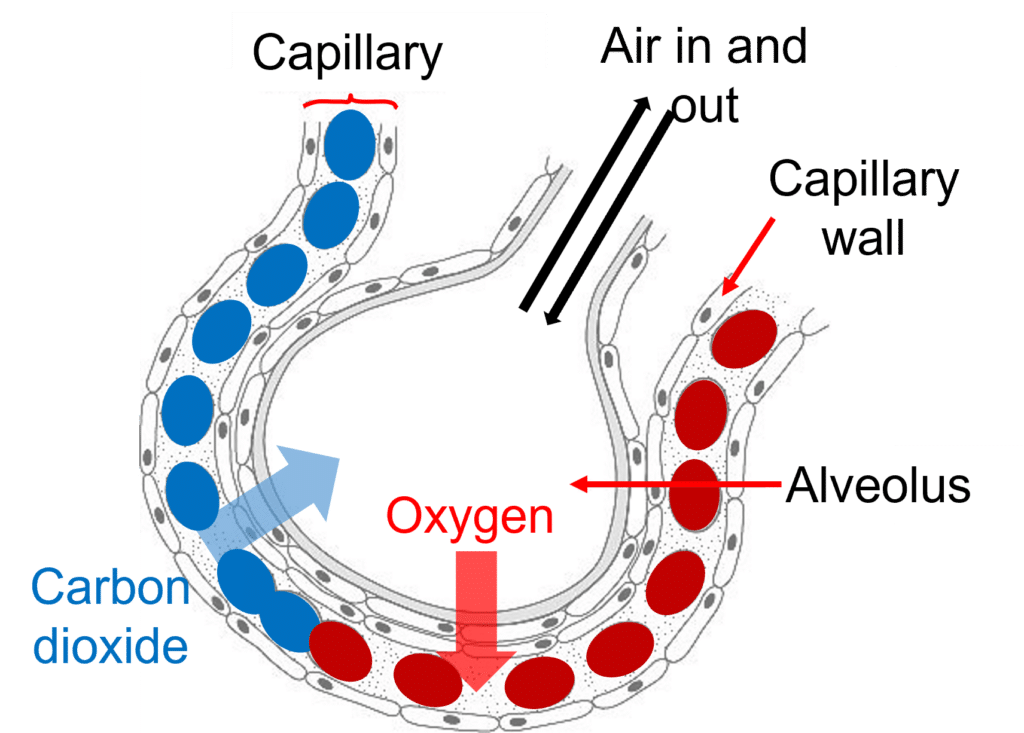
The lungs are responsible for taking in oxygen from the air so it can be carried by the blood to cells that require it for aerobic respiration. They also remove carbon dioxide from the blood and send it back out into the air.
They have lots of tiny air sacs called alveoli which allow for efficient gas exchange.
- They provide a massive surface area for the exchange of gases.
- They have a moist lining for dissolving gases.
- They have very thin walls so a short diffusion distance.
- They have a good blood supply to maintain the concentration gradient.
Fish Gills
Fish have gills that allow them to carry out gas exchange while in water.
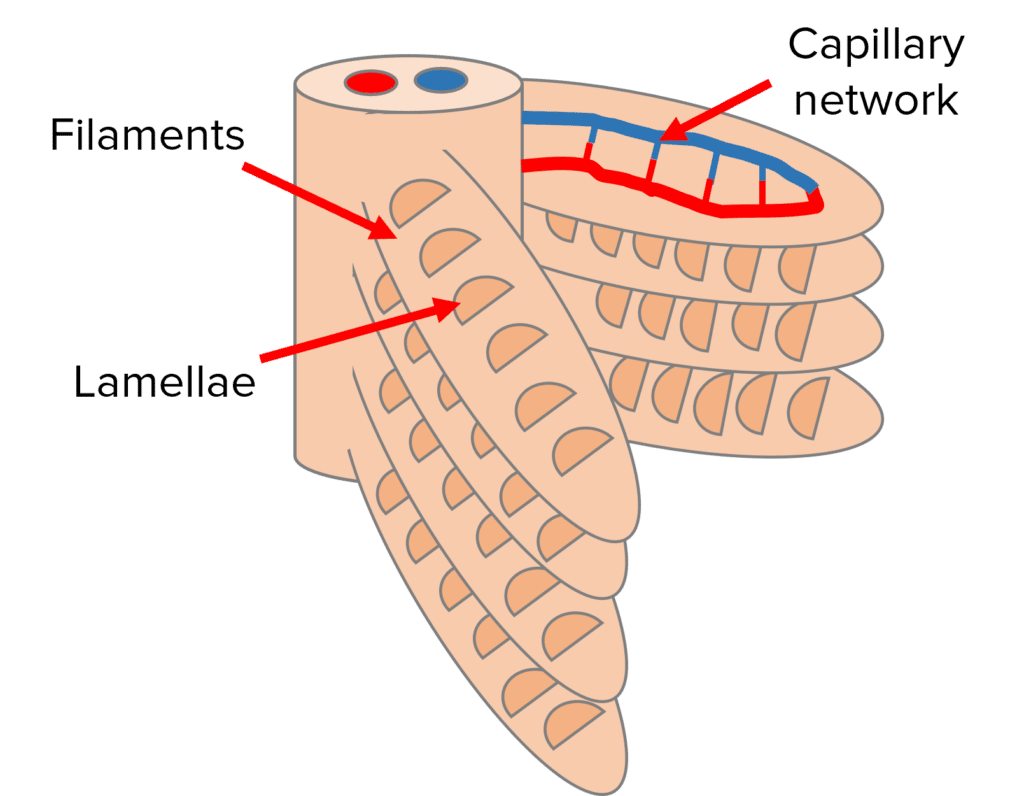
The water flows in through the fishes mouth and over the gills where oxygen diffuses into the blood from the water and carbon dioxide does the reverse.
The structure of the gills allows for efficient exchange:
- Each gill has many thin gill filaments which in turn are covered in lamellae which provides a massive surface area.
- Lamellae have excellent blood supply (capillary network) and a thin layer of surface cells to provide a short diffusion distance.
- Blood flows in the opposite direction to the water so a large concentration gradient is maintained and maximum oxygen is absorbed from the water.
Leaves
Leaves are structured in a way that allows oxygen and water vapor to diffuse out of the cells and carbon dioxide to diffuse into the cells.
To move between the air and the cells of the leaves, gases must pass though two different exchange surfaces.
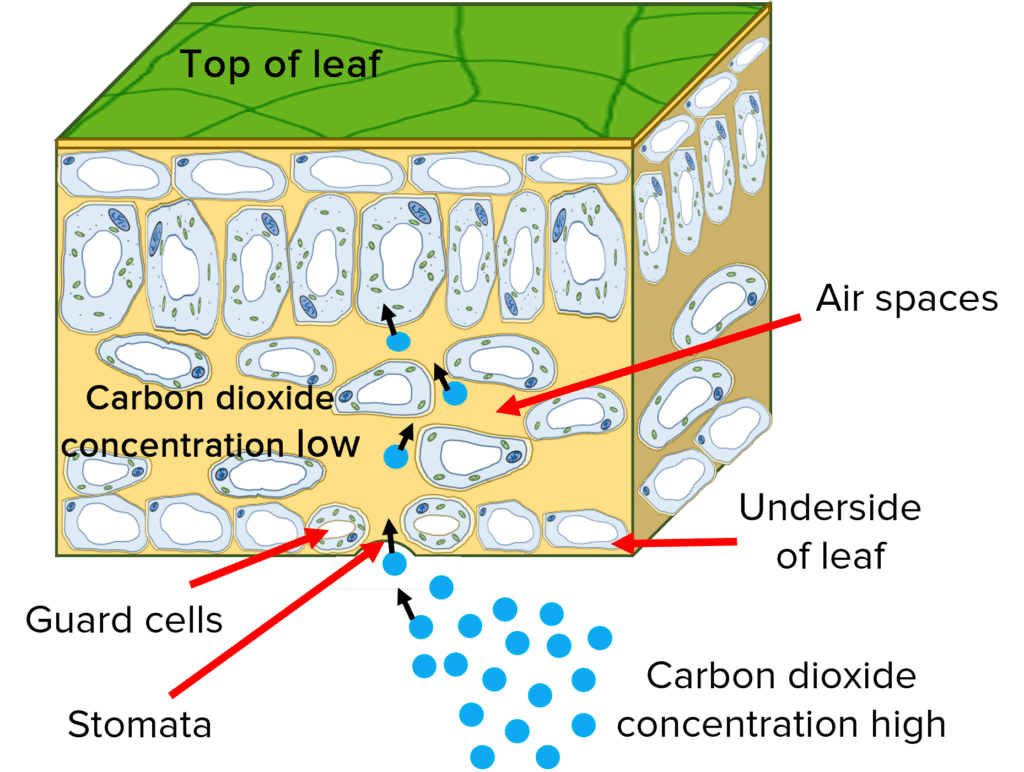
The underside of the leaf is an exchange surface between the air and the air spaces inside the cell. It is covered in tiny holes called stomata, which allow for carbon dioxide to enter and oxygen and water vapor to be expelled from the leaf, down concentration gradients. Stomata are controlled by guard cells that can close the stomata when the plant is losing more water than it is receiving, to prevent wilting.
The cell walls of the cells inside the leaf are the second exchange surface. Carbon dioxide diffuses into the cells for photosynthesis and oxygen and water vapor diffuse out. The air spaces that surround the leaf cells increase the area in which this gas exchange can take place.
Roots
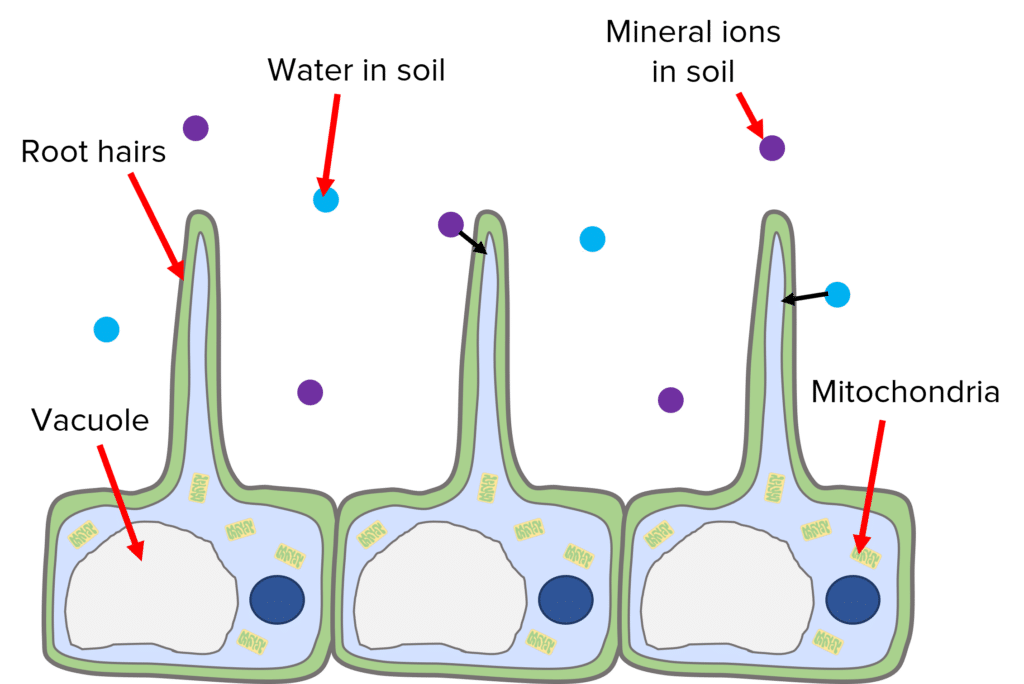
Plant roots have specialised cells called root hair cells that are adapted for efficient absorption of water and mineral ions from the soil.
- The root hair structures provide a large surface area.
- The vacuole full of concentrated cell sap creates a steep water potential gradient.
- They contain lots of mitochondria for the active transport of mineral ions.
Exchange Surfaces Example Questions
Question 1: Explain 3 ways that alveoli provide efficient gas exchange in the lungs.
[6 marks]
1 mark for description, 1 mark for explanation
Any 3 from:
- There are many so provide a large surface area for exchange.
- Have a moist lining to dissolve gases.
- Have thin walls so there is a short diffusion distance.
- Good blood supply/capillary networks to maintain concentration gradient.
Question 2: Explain how fish gills are adapted to their function.
[6 marks]
- Gills are made up of gill filaments which are in turn covered in lots of lamellae.
- This increases the surface area for the exchange of gases between the blood and water.
- Gills have good blood supply.
- This provides a short diffusion distance between the water and blood.
- The blood flows in the opposite direction to the water.
- This helps maintain a concentration gradient for gas exchange.
Question 3: Explain the purpose of root hairs.
[2 marks]
Root hairs increase the surface area of the roots so water and mineral ions can be absorbed efficiently from the soil.

MME Premium Membership
£19.99
/monthLearn an entire GCSE course for maths, English and science on the most comprehensive online learning platform. With revision explainer videos & notes, practice questions, topic tests and full mock exams for each topic on every course, it’s easy to Learn and Revise with the MME Learning Portal.
Sign Up Now





